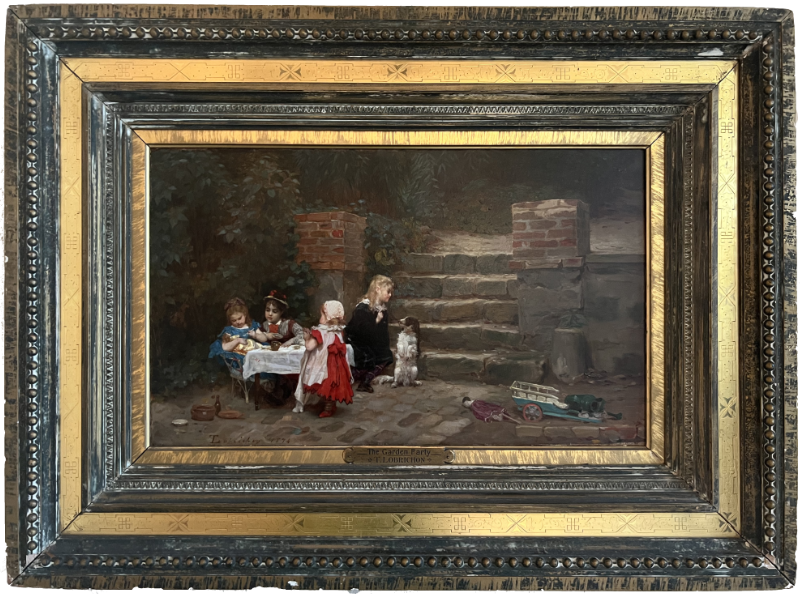
“The Garden Party” (dated 1874)
oil on wood panel, 12 x 20 inches
The Garden Party by Timoleon-Marie Lobrichon
Timoléon Marie Lobrichon, a distinguished student of François-Edouard Picot at the Ecole des Beaux-Arts in Paris, carved his artistic niche alongside luminaries like William-Adolph Bouguereau, Henri-Léopold Levy, and Isidore Pils. Focused on portraying babies and children, either in solitary compositions or alongside parents within genre settings, Lobrichon exhibited a distinctive talent.
One notable example of Lobrichon’s genre scenes is the painting “Helping with the Washing,” which graced the London art market in 1978. Commencing his regular appearances at the Salon in 1859, Lobrichon earned a prestigious medal in 1868. His Salon submissions predominantly featured charming genre scenes, including the renowned “Premiere Amour,” portraying a young girl with a soldier doll, showcased in 1872. His excellence was further acknowledged with the first-place medal in 1868.
Beyond the borders of France, Lobrichon contributed to exhibitions in Germany and Australia, extending the reach of his artistic prowess. Known for his captivating depictions of children, several of his works found a second life as advertisements in contemporary magazines. In 1884, Lobrichon’s artistic versatility shone through when he was commissioned to illustrate Jean Aicard’s book, “La Chanson de l’Enfant,” with an original painting from this project being auctioned in 1986.
While celebrated for his prowess in portraying children, Lobrichon’s artistic repertoire extended beyond this realm. A monumental horizontal canvas titled “The Birth of Spring” (1864) hinted at its potential role in adorning a Parisian hôtel particulier. Similarly, an oval painting, “An Allegory of the Dawn,” dated 1875, suggested a decorative purpose. Lobrichon’s artistic legacy endures in collections across museums in Besançon, Chalons-sur-Marne, Limoges, Mulhouse, and the New Orleans Museum of Art.
See more of Lobrichon’s work here.